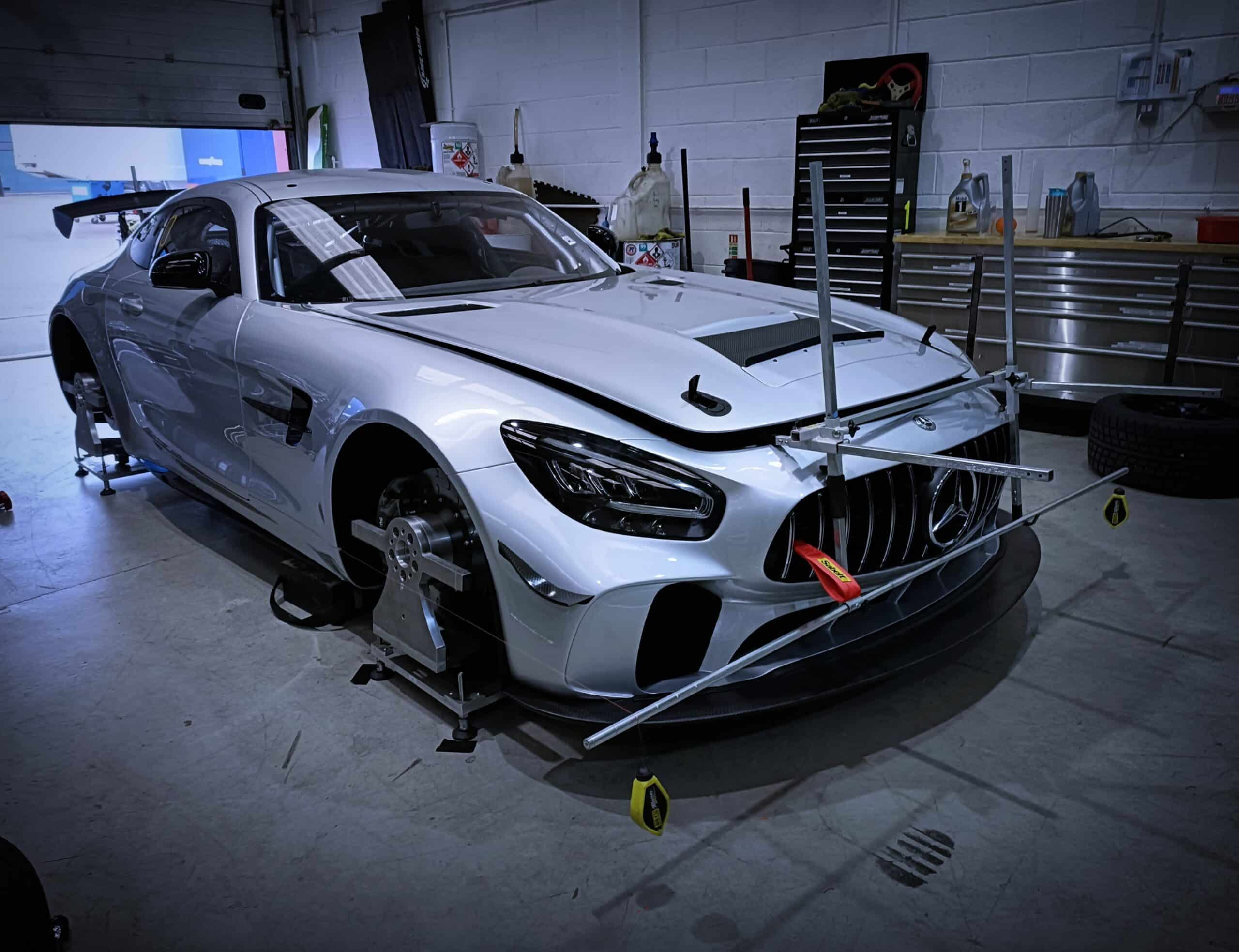A wheel alignment measures what angle the wheels are pointing. importantly, wheel alignment can be used to optimize handling, stability and tyre wear by changing Toe, Caster and Camber angles.
We aim to teach you
- What is a wheel alignment.
- Which measures get adjusted.
- Changing the alignment effects on driving.
- When do you need an alignment?
- What’s wrong when your alignment is out.
- Troubleshooting wheel alignment issue
What Is A Wheel Alignment?
A wheel alignment also known as tracking or geometry measures what angle the wheels are pointing.
No, I don’t mean when the steering wheel is turned. The measurement is taken when the wheel is straight to simulate driving straight.
As we live in a 3D world there is 3 angle we can measure. Toe, Camber and Caster understand what these are is vital to get a good chassis set up.
What Gets Adjusted And Its Effects on driving?
Toe angle
looking down on the vehicle from a top/birds-eye view. If the front tips of the wheel are pointing in, this is toe-in. If the wheels are parallel, this is zero toe. If the front wheel is pointing out, this is toe-out.
The toe alignment refers to the symmetrical angle the wheel creates with the longitudinal axis of the vehicle.
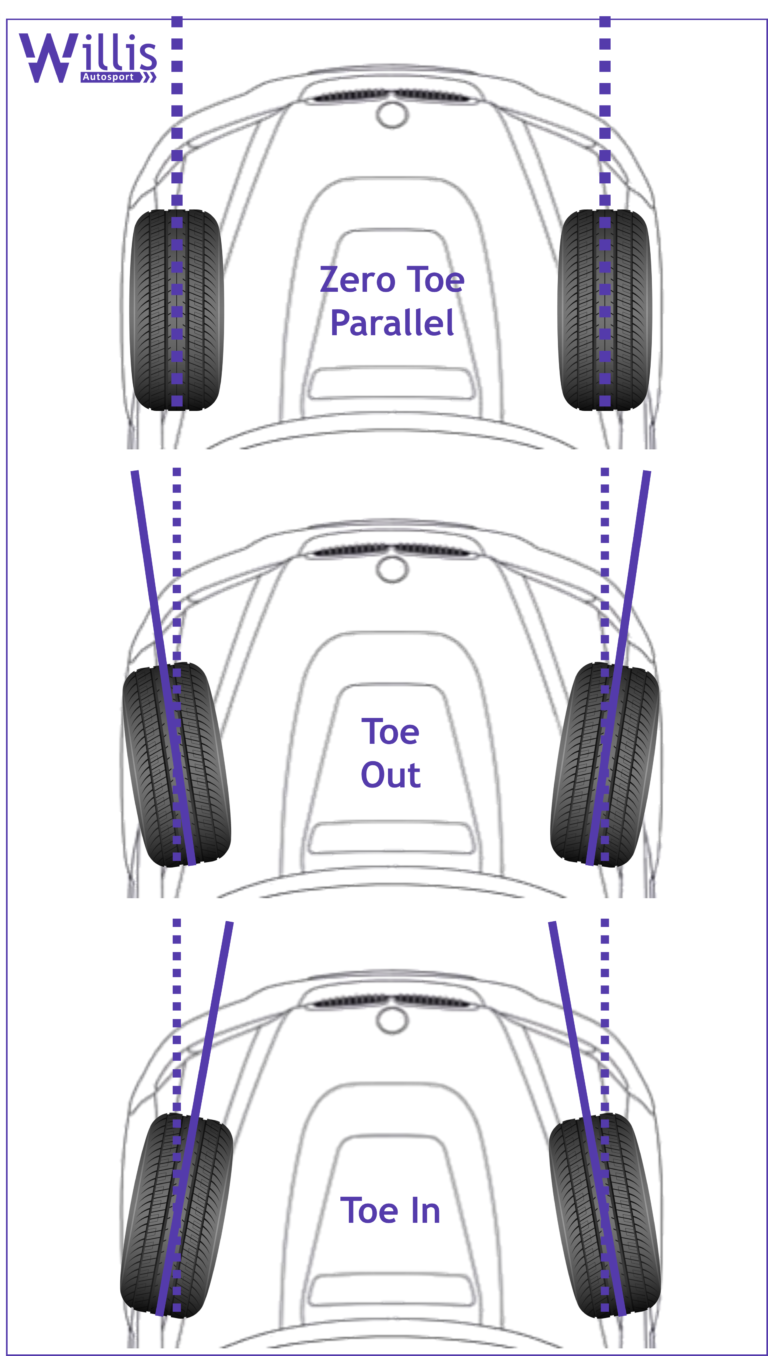
Vehicle toe alignment is often used to affect corner entry turn in stability and very on vehicle type.
Learn more about how to use toe alignment to enhance your vehicle performance here with our in-depth look into toe geometry turning.
Want to learn more about Toe Alignment? Click here for a more detailed dive and tips on how to tune it toe wheel alignment geometry.
Camber Angle
Looking from a head-on view of the vehicle, the angle the wheel sits in relation to its vertical axis is the camber angle.
There are 3 categories for camber angle.
Neutral / zero camber, when the wheel sits directly parallel with vertical.
Positive camber, the top of the wheel will point out away from the vehicle.
Negative camber, this is where the bottom of the wheel points out away from the vehicle. This is one of your most important to better handling.
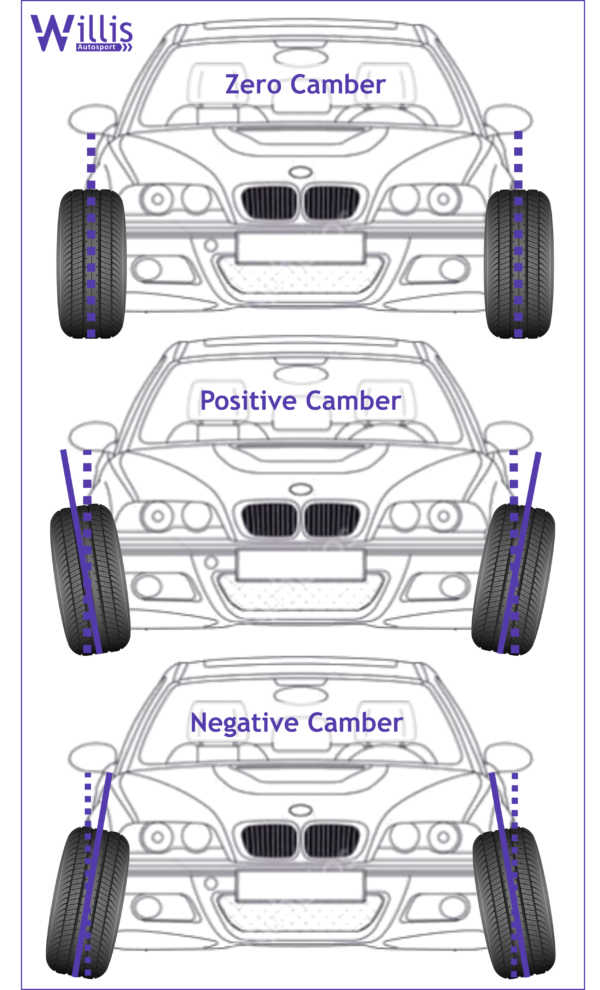
Increasing tyre grip during cornering is most dependent on optimizing negative camber value. this can reduce understeer and raise corner speed
To learn more about camber and how to turn it for your setup click this, to take you to our full article on Camber Tuning.
Want to learn more about Camber Angle? Click here for a more detailed dive and tips on how to tune it toe wheel alignment geometry.
Caster Angle
Looking from the side view, The caster angle is the measurement of the steering pivot axis measured against the vertical axis.
It’s easiest to visualise a McPherson Sturt as it rotates is the steering axis and the angle is tilted from the vertical is the caster.
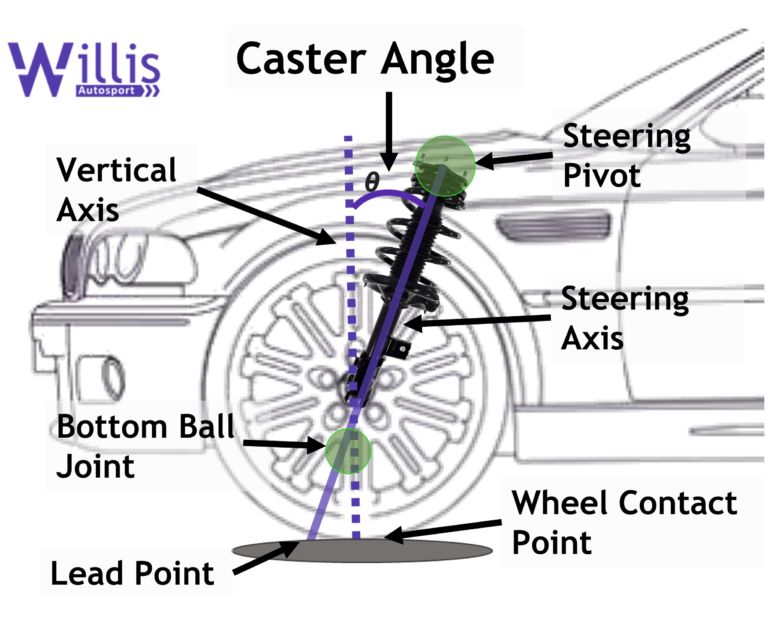
The casters angle can be used to refine steering feel, vehicle stability and optimize handling performance
It is best viewed from their side.
Learn more about how to use caster alignment to change steering feel, your vehicle performance here with our in-depth look into caster geometry turning.
To someries there are 3 measurements that make up the base of a wheel alignment, each measurement derived from the 3 dimensions.
To quickly oversimplify the 3 measurements,
- Toe alignment is the most commonly adjusted to change rotation, turn-in and stability.
- Camber is used to optimise tyre grip.
- Caster is fixed on most road-based cars so forget about it … seriously you’ll often need to acquire special compensation to adjust this to tune steering feel and stability.
Want to learn more about Caster Angle? Click here for a more detailed dive and tips on how to tune it toe wheel alignment geometry.
When would you want a wheel Alignment?
In this section, we are going to look at when and why you might need a wheel alignment.
It might be more serious than you think.
4 common Issue Caused If The Alignment Is Out
- The steering wheel to be off centre when driving straight
“not a huge problem but annoying“ - Excessive and uneven tyre wear
“Literally flowing money away” - The car pulls to one side when the steering wheel is being held lightly
“Far from ideal needs sorting“ - The car feels really twitchy or darting across the road.
“Serious issue, get it sorted immediately!”
These issues can easily be caused by a sudden jarring impact to the wheel such as. hitting a pothole in the road or pushing the limits of the track, on your flying lap and you cut the corner too much, smashing the apex curb… don’t ask me how I know.
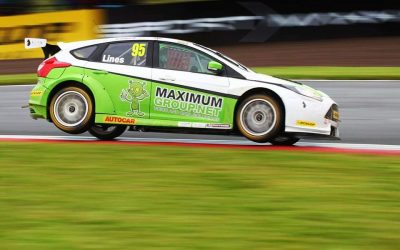
Troubleshooting
Two things cause the steering wheel to be off centre, unsymmetrical alignment on the right and left wheel.
Toe alignment must be symmetrical across the front axle because of steering.
If the wheel toe setting does not mirror each other the car will pull to one side and not steer straight.
If the toe is not symmetrical across the rear axle it can cause the vehicle to crab as the rear axle wants to travel in a different direction to the front. To drive straight the wheel turned slightly off to contract the rear.
Also racing on a bumpy track like Oulton Park the uneven rear toe can cause the car to feel twitchy and erratic. the rear axle skips across bumps gaining and losing grip, which isn’t the problem on its own. When you combine this effect with an uneven rear toe it creates the issue of the rear suddenly trying to steer the front, and the driver having saw at the wheel to get it drives straight.
A visual indicator that your alignment is out is that the tyre is extremely warm in one area.
- Too Much Negative Camber – inside edge is excessively warm
- Too Much Positive Camber – outside edge is excessively warm
- Too Much Toe Out – then the inside edge is very warm, also running your hand across then tyre wear will have a smoother text one way and rough. It is called feathering. Caused by the tyre being scrubbed across the group at an angle.
- Too Much Toe In – then the outside edge is very warm, with feathering texture only the outside edge
If you find your vehicle drifting off to one side when the steering is held lightly it can be a result of an in-balance in one area of these factors.
- uneven toe, pointing a wheel to cause the axle to crab across the road
- A in balance in caster angle left to right casing the car to slightly turn one way.
- Significantly uneven tyre pressure
This one is more for the track day enthusiast that drives their FWD car home. Also can be applied on bumper tracks too.
The car suddenly pulls one way then another when driving straight but not always. Creating an erratic snatchy steering feel.
The culprit is usually too much camber as the wheel hits groves, bumps, and even tramlines left by heavy trucks in the road surface.
Longitudinal grip is reduced by increasing camber, as these wheels hit these severally uneven surfaces the grip level change so much of causes one wheel to grip more snatching the steering, one way then others.
Unintended Wheel Alignment Change
Changing suspension components, such as fitting coilover or changing ball joints will alter the alignment too.
Let’s have a look at the coilover example and what happens.
Coilovers are fitted for ride height adjustability, often to lower the vehicle’s ride height. By lowering the vehicle this lowers the centre of gravity improving handling, however, the vehicle suspension has moved into its bump travel. As suspension travel often follows an ark movement this means the wheel’s camber changes. Bump steer will also occur by changing wheels toe angle with suspension travel. As the lower vehicle is sitting farther into the bump, travel increases the toe angle.
Excessive camber – reduces lateral grip reducing braking performance and acceleration grip. In addition to excessive tyre wear.
Excessive toe – will reduce top speed and the wheels are scrubbing the ground. Killing the tyre’s edge as they wear quickly.
The wheel alignment is set for a ride high and a drastic change to the ride height can negatively affect performance. After any ride, high changes checking the wheel Alignment would be recommended.
To keep the wheel pointing in a optimise window
I already know your smart enough to learn from other people’s mistakes, as your reading this. I definitely “didn’t” kill a set of good tyres by not having a wheel alignment after lowering a car, and I’m definitely not writing about it now so other people can learn from intimate mistakes…
**Note Roll centre correction and bumper steer correct kit are often used to correct the suspension geometry of a lowered vehicle in addition to on wheel alignment to maximize performance. Find out more about their advantages in an article coming soon.
If the coilovers act as a suspension link between the wheel hub and vehicle body, changing it can affect the wheel’s alignment.
As their mounting holes will be slightly oversized to allow the fasteners to fit through. An accumulation of the tolerance can result in the component mounting in a slightly different position. Resulting in a different geometry for the suspension that needs to be corrected for with a wheel alignment.
The same issue can be applied to any suspicious comment that links the vehicle body to the wheel hub. Lower control arm (aka wishbone) track rod, even ball joints.
Getting a wheel alignment will enable camber and toe settings to be corrected
Next Step...
I’m grateful for you taking the time to read all of this. Hopefully, this has given you a new insight into a way to tune your cars your car to drive better.
Have you found reading this useful? For more information, just that has great details I would recommend checking out our other free resources and articles.

